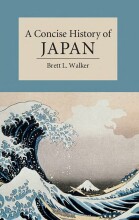Summary: Sources Of Japanese Tradition: From Earliest Times Through The Sixteenth Century | 9780231121392 | William Theodore De Bary
- This + 400k other summaries
- A unique study and practice tool
- Never study anything twice again
- Get the grades you hope for
- 100% sure, 100% understanding
Read the summary and the most important questions on Sources of Japanese Tradition: From earliest times through the sixteenth century | 9780231121392 | William Theodore De Bary
-
4 Chinese thought and institutions in early Japan
-
4.3.1 Reform edicts
This is a preview. There are 6 more flashcards available for chapter 4.3.1
Show more cards here -
The most important reform edicts in early Japan reflect one common goal. What is this goal?
They were aimed at establishing a Chinese type of centralized administration over areas that previously had enjoyed considerable autonomy under hereditary clan chieftains. -
When were the governors of the eastern provinces appointed?
During the first year of Taika. 645, 8th month, 5th day. -
What does the first Taika state?
".. We propose at present for the first time to regulate the myriad provinces." -
Who are you when you have the rank of "Suke"?
Assistant to a governor -
Who are you when you have the rank of "Hangan"?
Assistant district chief -
What happens if someone the rank of Hangan or below accepts a bribe?
You will have to pay a fine double the amount bribed and be punished accordingly. -
What happens if someone the rank of Suke or higher who obey the law of the first Taika?
They will surely be rewarded, while those who disobey will be reduced in rank -
Name some aspects of the law of the first Taika and what it means for a governor (Take on governor's perspective)
Your answer could include:
Prepare registers of all the free subjects of the state and of the people under the control of others.
Deal with profits arising from the lands in common with the people.
You may not decide criminal cases.
Do not bring large numbers of people with you when you come up to the capital.
You are only allowed to bring the local chieftains and the district officials with you when you travel to the capital.
You may ride the horses of your department and eat the food of your department when you are on public business. -
How many men are allowed as attendants on a chief governor?
Nine -
How many men are allowed as attendants on an assistant? How many on a secretary?
Seven, Five
- Higher grades + faster learning
- Never study anything twice
- 100% sure, 100% understanding
































